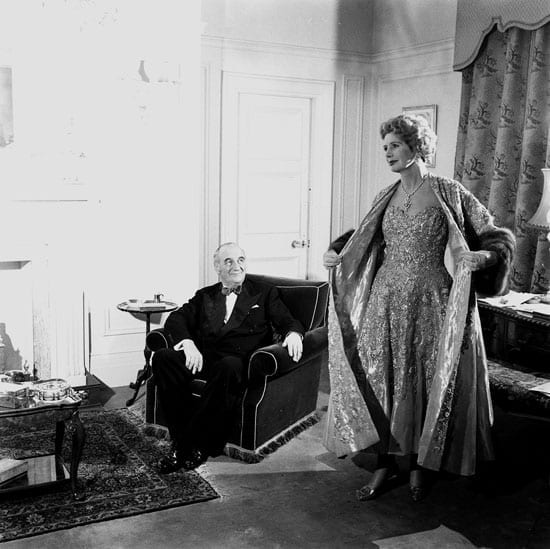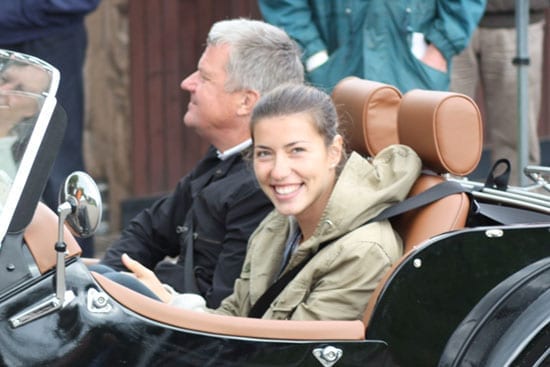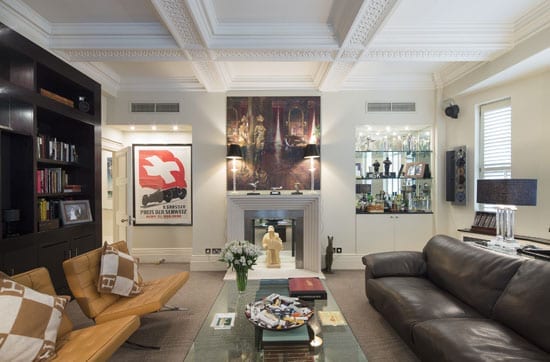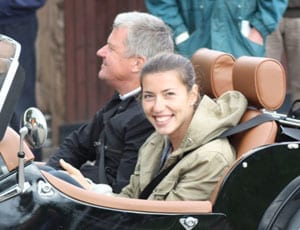As Sir Bernard and Lady Docker’s Mayfair apartment comes to the market, parallels can be drawn with the removal of Charles Morgan from the board of his eponymous company
Last month, just as an apartment that was formerly the home of Sir Bernard and Lady Docker comes to the market, parallels to the couple’s life can be drawn from events surrounding the removal of Charles Morgan from the board of the Morgan Motor Company.



Sir Bernard and Lady Docker, best known for their extravagance whilst at the helm of Daimler in the 1950s and for spending over £5 million in just two years during this time, moved from an apartment in Grosvenor Square into Claridge House in Davies Street soon after their marriage in 1949 because she wanted “to live closer to Claridge’s Hotel”.
The Art Deco Claridge House apartment, built to the designs of S. Gordon Reeves – who also worked on the creation of Dolphin Square and the Earls Court Exhibition Centre – in 1924, suited the Dockers perfectly as not only was it next to their favourite hotel, but it also provided ample space to entertain. Situated on the fourth floor and 1,604 square foot in size, Lady Docker is said to have used one of the bedroom suites to house her collection of mink coats, hats and couture outfits and called upon Claridge’s to deliver food and drinks to them regularly.
Whilst the “Docker Daimler” cars that would later immortalise Lady Docker were kept in the adjoining mews and cared for by a chauffeur named Prattley, it was for a 1949 robbery that the apartment was to become best known. Said to have either been masterminded by the Kray twins or a society thief known as “Billy B”, £52,000 of jewels were stolen from Lady Docker’s collection after a maid carelessly left the door to the flat open. Amongst the stolen items was a “spectacular” pink diamond ring. The incident subsequently inspired Peter Sellers, a regular guest at the apartment, and Blake Edwards to make the 1963 film The Pink Panther. The jewellery was never recovered.
Equally, in December 1954, after a party for over 200 at Claridge’s that cost in excess of £4,000 and to which Lady Docker wore £200,000 worth of jewellery, the couple hosted an after party in the Claridge House apartment. At this event, Lady Docker is said to have stated: “I once lived above a butcher’s shop and now I live above Claridge’s Hotel. It demonstrates how far I’ve travelled in life”.
Norah Turner, as she was born, was the daughter of a Derby based car dealer who committed suicide when she was 16. She then had a relationship with the 9th Duke of Marlborough and a wine merchant named Clement Callingham. He subsequently made Turner his wife in 1938. On Callingham’s death in 1945, it is said the future Lady Docker inherited £1.5 million and an interest in the wine and spirit merchant’s Henekeys. As a second husband, Norah Callingham married Sir William Collins, the president of Fortnum & Mason, in 1946. Though the marriage was short-lived as Sir William died in 1948, the now elevated Lady Collins profited from it in the form of a £6 million legacy. It was her third marriage to Sir Bernard Docker, though, that catapulted the “wealthiest woman in Mayfair” into another league financially but it was this union also that ultimately brought about both of their downfalls.
Sir Bernard Docker (1896 – 1978) was a powerful industrialist when he encountered the publicity loving Lady Collins. Chairman of Birmingham Small Arms and its subsidiary Daimler and a director of Midland Bank, Anglo-Argentine Tramways and Thomas Cook & Son, Sir Bernard commissioned his firm to build lavish cars in his new wife’s honour and lavished luxury and fame upon her through them. Amongst the vehicles, in 1951, was a gold plated Daimler and a gold and Zebra hide coupé in 1955. Lady Docker (1905 – 1983) described the vehicles, designed to attempt to make Daimler more attractive to a “less stuffy audience”, as being “like [her] children”. In reality, all they brought was trouble as in 1953 the Midland Bank decided to request Sir Bernard’s resignation after shareholders decided it was “not in the bank’s best interest to be associated with the publicity” that surrounded him and his wife.
In the coming years, Lady Docker’s extravagance in promoting Daimler furthered the public profiles of her and her husband. As well as the customised Daimlers, Lady Docker invited miners aboard their yacht for a party, won a fixed marbles championship and spent her husband’s company’s money on dresses that she wore at the 1956 Paris Motor Show. This and the purchase of Glandyfi Castle in Wales with BSA funds brought about a shareholder rebellion later that year. It ultimately resulted in Sir Bernard’s eviction and to the couple being forced to unceremoniously returning the “Docker Daimlers”.
Relieved of their duties, Sir Bernard and Lady Docker concentrated on socialising with the likes of Prince Rainier of Monaco – who eventually banned the pair from the principality after Lady Docker tore up a Monacan flag as a protest at her son not being allowed to attend Prince Albert’s christening with her – and investing in lavish projects such as the construction of a casino in Cannes. By 1965, the money had run out and Sir Bernard placed his yacht, Shemara, on the market for £600,000. It sold for just £290,000.
As tax exiles in Jersey, Lady Docker upset the locals when she described them as “the most frightfully boring, dreadful people that have ever been born”. Claridge House provided relief from this tedium and after Sir Bernard’s death in 1978, she remained there until moving into first Claridge’s and then finally, when her money truly dried up, the Great Western Hotel in Paddington. Hers was indeed a tale of rags to riches to rags but “Lady Muck” – as she was termed by her critics – will in fact be remembered for her contribution to an era of motoring elegance and her glitzy manner of living.
For sale through Mount Street agents Wetherell, Sir Bernard and Lady Docker’s former home now provides two bedroom suites, a large breakfast kitchen and a 20 foot by 17 foot reception. Suitably styled by the renowned Pullman Gallery, the spirit of “Naughty Norah” lives on in the form of At Deco era prints and objet d’art. A price of £4.4 million is sought for it.
Separately, last month, we reported on the travails of another British motoring manufacturer, the Morgan Motoring Company, after they removed Charles Morgan, a member of the founding family, from their board. Reports that Morgan’s “glamorous actress wife” took to Twitter to launch an “angry tirade against the ‘greed and ego’ of her husband’s relatives and former boardroom colleagues” echo the 1956 ousting of Sir Bernard Docker from Daimler. A petition to reinstate Mr Morgan, #BringBackCharles, has been created due to the public’s love for what he achieved at Morgan and thus far it has over 400 signatures. Times indeed change but given the contributions both made to the success of their companies, one has to lament these sorry ends.
Perhaps Claridge House might make a suitable home for Charles Morgan. He should put in a bid.
Subscribe to our free once daily email newsletter here:
